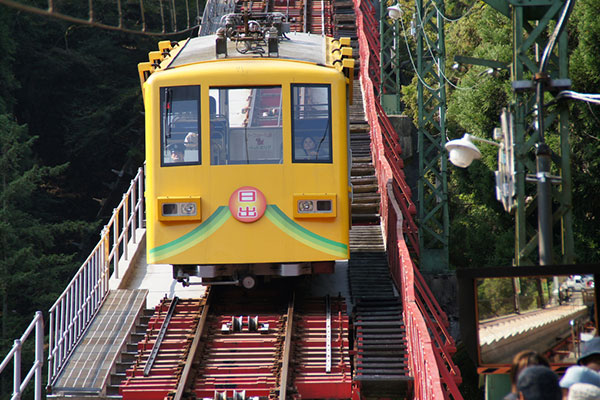
One man can both drive your train up to this popular Japanese vacation spot then conduct your religious ceremonies.
On a forested mountain near Tokyo, there sits a large shrine that has served as a place of worship for Shinto, Japan’s ancient indigenous religion, for two millennia. For almost two thousand years, faithful pilgrims have ascended Mount Mitake to visit its Musashi-Mitake Shrine – one of the oldest shrines in Japan – so that they may honor and pray to the kami, or Japanese gods and spirits, of the ancient Shinto faith. Today, in addition to performing religious ceremonies, the shrine has become an increasingly popular Japanese vacation attraction.
For most of the shrine’s history, the pilgrimage up Mount Mitake’s remote trails would have been lengthy and potentially dangerous. Today, one may take a 90-minute train ride from Ome, Tokyo, to Chichibu Tama Kai National Park, where Mount Mitake, or “Mitake-san” as the locals call it, is located. The mountain and its picturesque sights are a popular attraction for people looking for a break from the crowded Tokyo, whose greater metropolitan area houses over 35,000,000 people – roughly the same population size of the entire country of Canada.
Tokyo’s Ome rail line deposits its passengers at Mitake-san village near the top of the forested mountain, and from there one may ascend to the summit where the Shrine has welcomed pilgrims for so centuries. A visitor usually would not expect, however, that the same man conducting the cable-car to the village may also be the priest conducting the Shinto rites after arriving at the shrine, Kazuomi Harashima.
photo: Toshiro Matsuzaki
A native of Ome, 39 year-old Harashima not only serves the Mitake Tozan Railway company as a cable-car conductor and station master but also serves as one of 57 Shinto priests of the Musashi-Mitake Shrine as well. Aside from that, he is also an event organizer and tour guide for many of the 500,000 annual visitors to Mount Mitake, volunteers as a local firefighter, tends to his family farm, and runs his family’s inn with his wife, Miyuki, whose family heads have also served as priests at the shrine.
Mount Mitake has served as a sacred place of worship since ancient times: its millennia-old Musashi-Mitake Shrine is believed to have been created in the first century B.C. during the reign of Emperor Sujin, the tenth emperor of Japan. The temple houses the famous Zaōgonge Statue, which many believe was built in 736 A.D. Although the national park features eight separate mountain peaks with the area dotted with ancient shrines and villages where people have lived and worshipped for centuries, Mount Mitake and its shrine remain one of the most popular attractions.
Throwing himself completely into his work, Kazuomi Harashima has barely any time for himself. He prefers to spend his free time promoting tourism to the mountain and tending to his parishioners, of whom many are also guests at his family’s inn, one of the traditional Japanese inns in the Chichibu Tama Kai National Park. Guests staying at the inn even get to enjoy fresh vegetables grown on his farm, perhaps planted and picked by Kazuomi’s own hands. He also visits parishioners in their homes during the winter, handing out traditional Shinto notes bestowing faithful worshippers with good fortune from the kami.
Dedicated to his many tasks, Kazuomi Harashima hopes to make Mount Mitake and the worship halls of the Musashi-Mitake Shrine one of Japan’s central tourist attractions. Although the area attracts over half a million visitors each year, Harashima’s dreams of Mount Mitake as a Japanese vacation attraction and pilgrimage are even bigger. With his exemplary discipline and devotion, this humble station manager, innkeeper, volunteer firefighter, farmer, and Shinto holy man may yet see his dream realized.
